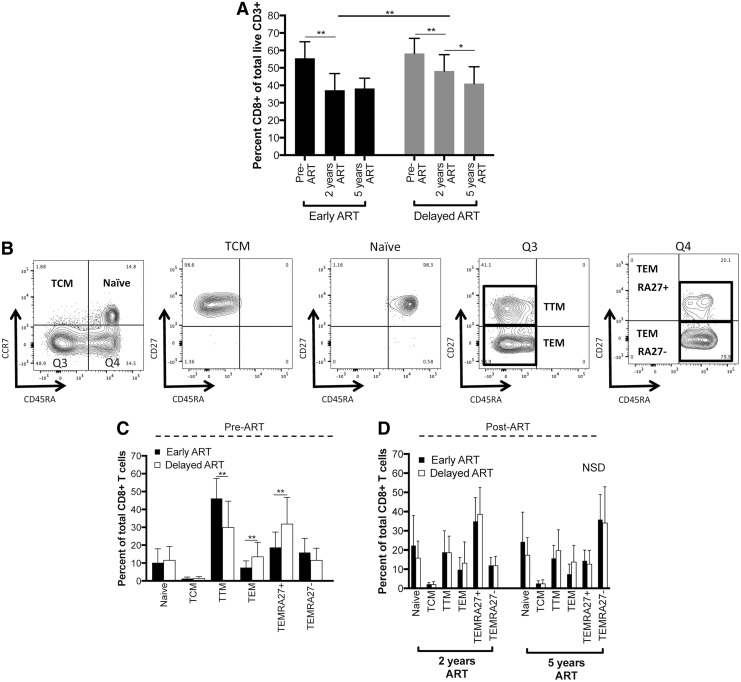FIG. 1.
Peripheral blood CD8+ T cell subset distribution in Early and Delayed ART groups. PBMCs were thawed and stained with fluorescently labeled antibodies for flow cytometric analysis. (A) Early and Delayed ART groups demonstrated a similar overall percent of live CD3+ cells that are CD8+ before the initiation of ART (gating strategies shown in Supplementary Fig. S1). After ART initiation, the percent was significantly higher in the Delayed ART group after 2 years of ART, however, the difference normalized after 5 years of continuous viral suppression on ART. (B) Gating strategy for naive, effector, and memory CD8+ T cell subsets. CD27 expression is shown on all four quadrants (Q) from the initial subsets defined by CD45RA and CCR7 expression (leftmost plot). Definition of subsets: naive (CD45RA+CCR7+), TCM (central memory; CD45RA−CCR7+), TTM (transitional memory; CD45RA−CCR7−CD27+), TEM (effector memory; CD45RA−CCR7−CD27−), TEMRA27+ (CD45RA+CCR7−CD27+), TEMRA27− (CD45RA+CCR7−CD27−). (C, D) Summary of the percentage of each CD8+ T cell effector-memory subset in the two treatment groups at three time points [pre-ART (C), after 2 and 5 years on ART (D)]. Only significant differences between the Early and Delayed ART groups within the same subset at the same time point are highlighted with statistical significance bars (statistically significant differences within group across time points not shown). *p < .05, **p < .01. ART, antiretroviral therapy; NSD, no statistically significant differences; PBMC, peripheral blood mononuclear cell.

